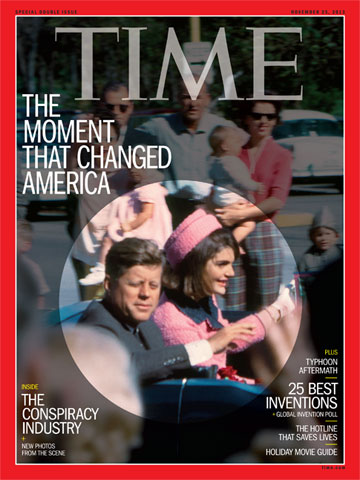
(5 of 8)
The point of recounting this sadly familiar chronology is to show that the seeds of doubt that would grow into the forest of conspiracy were planted even before President Kennedy's young son drew himself up three days later to deliver that indelible, heartbreaking salute to his father's coffin. Why, given the fears about Dallas, was the President riding in an uncovered car? Why choose a route that slowed the motorcade directly beneath the book-depository windows, where investigators found boxes stacked to form a sniper's nest and three empty rifle shells on the floor? Why claim that the shots were fired from behind when some witnesses were certain that they heard, or even saw, gunmen on the grassy knoll in front of Kennedy? Why wasn't Hill on the back of the President's limo to begin with? Why didn't the bullet found at the hospital show more damage, given the official theory that it passed through Kennedy's back and throat before wounding Connally as well? Why did the agents start scrubbing the limousine? Why wasn't the autopsy done in Dallas? Why wasn't the Zapruder film more definitive? Why was Johnson so determined to take the oath from Sarah Hughes? Why did Oswald call himself "a patsy"? Why did Ruby kill him before he could stand trial?
And the mystery that arguably framed all the others: What happened to those Dallas right-wingers? For many liberals, this was the most difficult mystery to swallow. How had the fateful Friday dawned amid fears that Kennedy's visit would be spoiled by the minions of the bigoted oilmen and mad General Walker--only to close with an apparent left-winger, Oswald (an avowed Marxist, admirer of the Soviet Union and self-described friend of Castro's Cuba), behind bars?
For America's cultural and intellectual elite, the true threat facing the nation in the autumn of 1963 was the militant right, with its McCarthyist witch hunts and massive resistance to integration. By contrast, the supposed red menace of global communism was dismissed as a paranoid fantasy of the conservative mind. Oswald, for them, was precisely the wrong person to be Kennedy's killer. As the author William Manchester reported in his authorized account, The Death of a President, Jacqueline Kennedy mused shortly after Oswald's arrest that the assassin didn't fit the crime. Her husband "didn't even have the satisfaction of being killed for civil rights," she said. "It had to be some silly little Communist."
The conspiracy seedlings fell on fertile ground. In one way or another, all the alternative theories of the assassination, spread across 50 years, would seek either to remove Oswald as the killer or to remake him in a new, more suitable image. The idea of a single gunman firing from a window overlooking Elm Street--the "lone-nut theory," as critics contemptuously call it--might be the simplest explanation, but it was not enough to convince the public. Instead, Oswald has been cast as witting or unwitting pawn of the oilmen (angry that Kennedy wanted to eliminate their tax breaks), the military (worried that Kennedy would de-escalate the Cold War and make peace in Vietnam), the Mafia (determined to derail Kennedy's Department of Justice), the CIA (fearful that Kennedy would end the covert plot to kill Castro) or Johnson (in danger of being swamped by scandal and dumped from the 1964 ticket).
